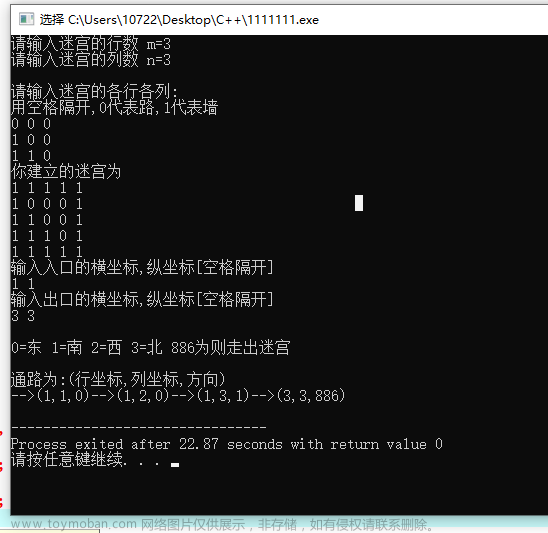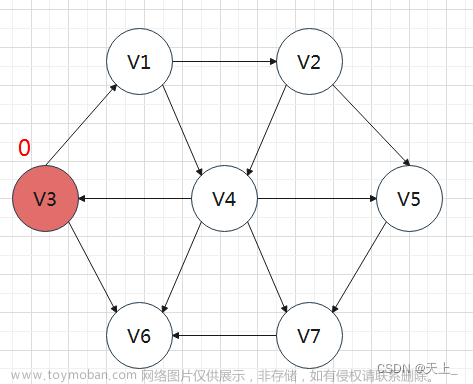 文章来源:https://www.toymoban.com/news/detail-717868.html
文章来源:https://www.toymoban.com/news/detail-717868.html
 文章来源地址https://www.toymoban.com/news/detail-717868.html
文章来源地址https://www.toymoban.com/news/detail-717868.html
#include <iostream>
#include<queue>
using namespace std;
int dir[8][2]={{-1,0},{-1,1},{0,1},{1,1},{1,0},{1,-1},{0,-1},{-1,-1}};
int map_[1010][1010];
int sx,sy,ex,ey;
void BFS(int x,int y);
void outPath();
struct Node{
int x,y;
Node(int x=0,int y=0){
this->x=x;
this->y=y;
}
};
Node **path;
queue<Node> q;
int main()
{
int x,y;
cin>>x>>y;
sx=0;
sy=0;
ex=x-1;
ey=y-1;
path=new Node *[x];
for(int i=0;i<x;i++)
{
path[i]=new Node[y];
for(int j=0;j<y;j++) {
cin>>map_[i][j];
path[i][j]=Node(0,0);
}
}
BFS(sx,sy);
outPath();
return 0;
}
void BFS(int x,int y)
{
//queue<pair<int,int>> q;
q.push(Node(x,y));
while(!q.empty()) {
Node p=q.front();
q.pop();
if(p.x==ex&&p.y==ey) {
return;
}
for(int i=0;i<8;i++) {
int nx=p.x+dir[i][0];
int ny=p.y+dir[i][1];
if(nx<0||nx>=ex+1||ny<0||ny>=ey+1||map_[nx][ny]==1) {
continue;
}
path[nx][ny]=p;
q.push(Node(nx,ny));
map_[nx][ny]=1;
}
}
cout<<path[ex][ey].x<<endl;
}
void outPath()
{
int p=ex,q=ey;
cout<<"("<<ex+1<<","<<ey+1<<")"<<endl;
//cout<<path[p][q].x<<endl;
while(path[p][q].x!=sx||path[p][q].y!=sy ) {
cout<<"("<<path[p][q].x+1<<","<<path[p][q].y+1<<")"<<endl;
int t=p;
p=path[p][q].x;
q=path[t][q].y;
}
cout<<"("<<sx+1<<","<<sy+1<<")"<<endl;
}
/*
6 8
0 1 1 1 0 1 1 1
1 0 1 0 1 0 1 0
0 1 0 0 1 1 1 1
0 1 1 1 0 0 1 1
1 0 0 1 1 0 0 0
0 1 1 0 0 1 1 0
*/
到了这里,关于数据结构线性结构(二)6迷宫最短路径的文章就介绍完了。如果您还想了解更多内容,请在右上角搜索TOY模板网以前的文章或继续浏览下面的相关文章,希望大家以后多多支持TOY模板网!



![【Python数据结构与算法】--- 递归算法的应用 ---[乌龟走迷宫] |人工智能|探索扫地机器人工作原理](https://imgs.yssmx.com/Uploads/2024/02/752756-1.gif)









